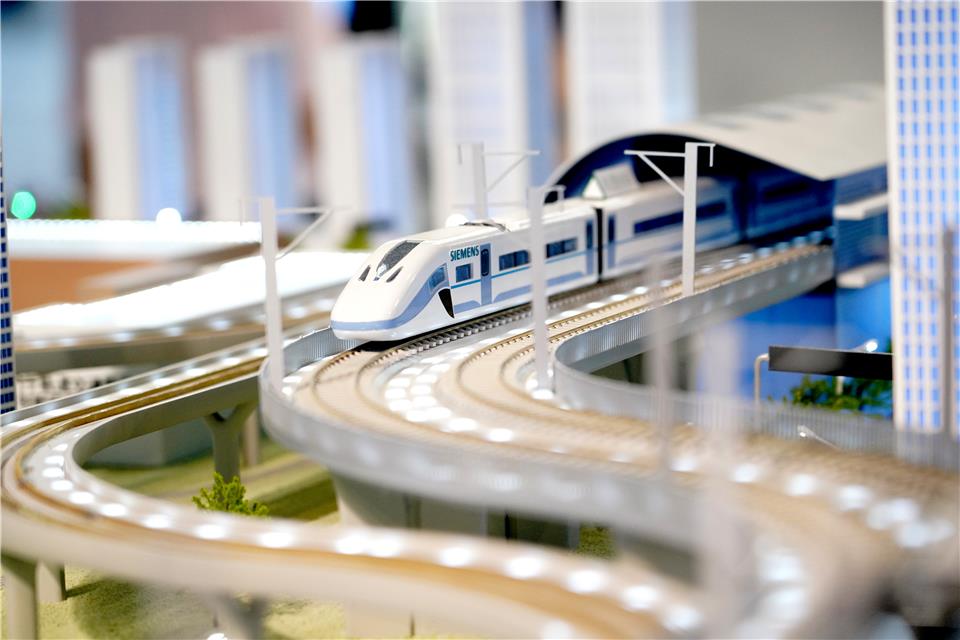China's subways on track to smarter, greener future
MetroTrans 2019 in Beijing, the showcase of next-generation subway cars and technologies, drew together China's latest innovations such as advanced materials, artificial intelligence and cloud computing, depicting smarter and greener public transport of the future.
Tapping the window to surf online, automatic in-cabin temperature control, and real-time information on how crowded the subway line is.

A metro model on display at the MetroTrans 2019 in Beijing, July 26, 2019. [Photo/ce.cn]
MetroTrans 2019 in Beijing, the showcase of next-generation subway cars and technologies, drew together China's latest innovations such as advanced materials, artificial intelligence and cloud computing, depicting smarter and greener public transport of the future.
CETROVO, developed by CRRC Qingdao Sifang, was one of the most-anticipated subway cars at the exhibition. It is environmentally friendly with an intelligent design and top speed of 140 km per hour.
Chen Xu, one of the lead designers, said the CETROVO is 13 percent lighter than the average subway carriage with a carbon fiber composite body and frame. Its silicon carbide permanent magnetic traction system improves energy efficiency by 15 percent, and noise levels are 3 decibels lower.
A fully active suspension system bogie makes the ride exceptionally smooth.
Passengers can surf online via smart screens integrated in the windows, search information, browse the news and watch videos.
Meanwhile, the latest subway car from CRRC Changchun Railway Vehicles is powered by flexible solar panels and vehicle batteries, making it China's first solar-powered transit rail car.
On a display screen inside the cabin, real-time information tells passengers how crowded the carriage with blue is for comfortable and red for crowded.
Rail transit control system integrator CASCO introduced the fully automatic operation system 2.0 for smart subways. From wake-up in the subway yard to self-inspection to operation, washing and going dormant, the carriage can complete its daily routine without human intervention.
Meanwhile, as automatic train operation requires reliable information systems and networks, growth in subway lines and passenger volumes poses new challenges to information and communication systems.
Huawei introduced the Urban Rail Cloud and networking switches powered by HiSilicon chips. The switches, the size of four traditional computer cases, can meet the computing demand of the whole subway system.
This year is the 50th anniversary of China's subway officially entering operation.
According to China Urban Rail Transit Association, since Beijing Subway Line 1, China's first subway line, started operation in 1969, more than 6,126 km of urban rail lines - 76 percent of them subway lines - have been put into operation in 37 cities on the Chinese mainland.
The three-day MetroTrans 2019 wrapped up in Beijing on Saturday.

